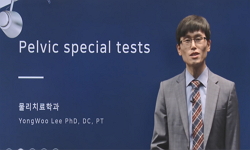PURPOSE This study analyzed differences in ball speed and kinematic, kinetic characteristics according to stride length. METHODS Forty participants recruited for the study were divided into two groups based on stride length: an over stride group (over...
http://chineseinput.net/에서 pinyin(병음)방식으로 중국어를 변환할 수 있습니다.
변환된 중국어를 복사하여 사용하시면 됩니다.
- 中文 을 입력하시려면 zhongwen을 입력하시고 space를누르시면됩니다.
- 北京 을 입력하시려면 beijing을 입력하시고 space를 누르시면 됩니다.


투구 시 보폭에 따른 공의 구속과 운동학적, 운동역학적 차이 = Ball Speed and Kinematic, Kinetic Differences According to Stride Length During Pitching
한글로보기https://www.riss.kr/link?id=A109535678
- 저자
- 발행기관
- 학술지명
- 권호사항
-
발행연도
2024
-
작성언어
-
- 주제어
-
KDC
600
-
등재정보
SCOPUS,KCI등재
-
자료형태
학술저널
-
수록면
600-608(9쪽)
- 제공처
-
0
상세조회 -
0
다운로드
부가정보
다국어 초록 (Multilingual Abstract)
PURPOSE This study analyzed differences in ball speed and kinematic, kinetic characteristics according to stride length. METHODS Forty participants recruited for the study were divided into two groups based on stride length: an over stride group (overstride, OS) and an under stride group (understride, US). Independent sample t-tests were conducted to analyze differences in pelvis and trunk kinematics, ground reaction forces (GRF), and timing of pitch between groups. RESULTS Significant differences were found between groups in drive leg GRF impulse, pelvis, trunk closed angle and pelvic angular velocity (p<.05). Furthermore, the OS had statistically later pitching timings than the US at stride foot contact, maximal external rotation, and ball release phases (p<.05). CONCLUSIONS The maximized drive leg GRF impulse created a wider stride, significantly increasing the pelvis and trunk’s opening angles. Additionally, the OS displayed characteristics of later pitching timings compared to the US. However, since no significant differences in ball speed were observed between groups based on stride length, perhaps stride length does not contribute directly to ball speed. Future research should investigate optimal stride length tailored to individual flexibility and physical characteristics.
동일학술지(권/호) 다른 논문
-
선수 핵심 역량과 효율성의 역동이 성적에 미치는 영향: 경륜 선수의 입상을 중심으로
- 한국스포츠과학원
- 이상현 ( Sang Hyun Lee )
- 2024
- SCOPUS,KCI등재
-
남자 청소년 운동선수의 절실함이 자기관리에 미치는 영향: 성취목표성향의 조절효과
- 한국스포츠과학원
- 이한결 ( Hangyeol Lee )
- 2024
- SCOPUS,KCI등재
-
엘리트 여자필드하키선수의 포지션과 선수교체 시간이 운동 수행에 미치는 영향
- 한국스포츠과학원
- 김미선 ( Mi-sun Kim )
- 2024
- SCOPUS,KCI등재
-
탁구 숙련성과 시간차단 구간에 따른 상대적 시선 엔트로피 분석
- 한국스포츠과학원
- 송석현 ( Seok-hyun Song )
- 2024
- SCOPUS,KCI등재




 KCI
KCI KISS
KISS




